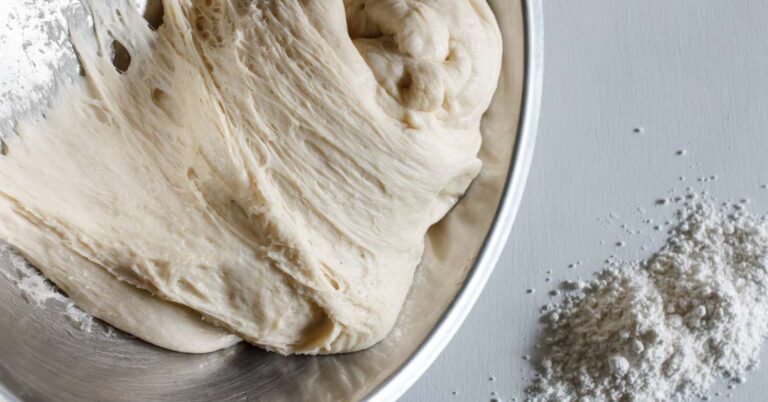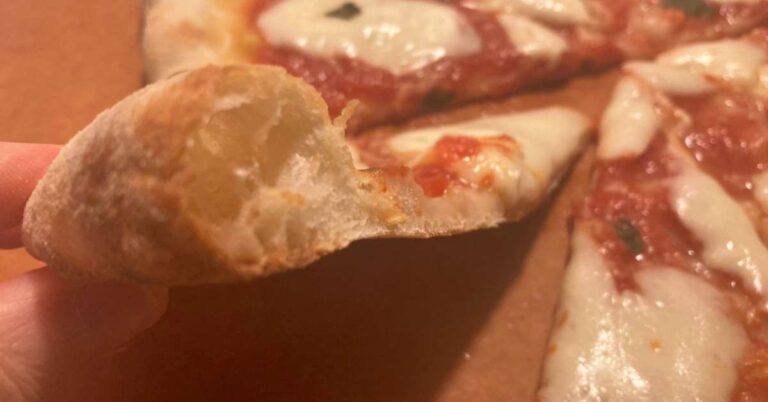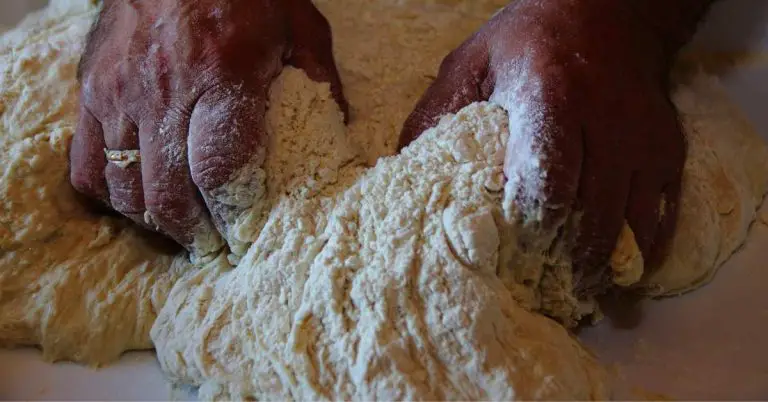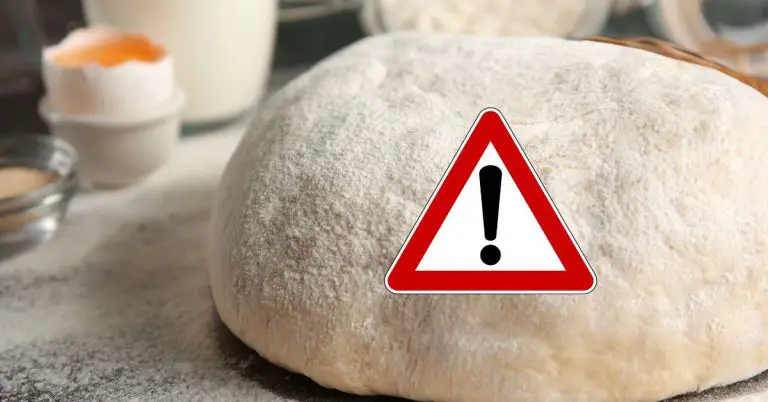Can You Knead Pizza Dough Too Much?
Kneading dough is a necessary skill when it comes to making pizza at home, unless you plan on using a no-knead homemade pizza dough recipe like I do. So naturally, one of the most common questions I get asked is if you can knead pizza dough too much. The answer is a multifaceted one.
You can absolutely knead pizza dough too much, but not by hand and not generally to a point where it can’t be fixed. If you’ve kneaded your pizza dough too much using a stand mixer, you can always let it rest at room temperature for several hours to relax it again.
Still interested? Let’s get into why we knead dough in the first place, what happens if you knead too much, and how to know when your pizza dough is perfectly kneaded and ready for proofing. I’ll even share a tip that will let you skip kneading your pizza dough altogether.
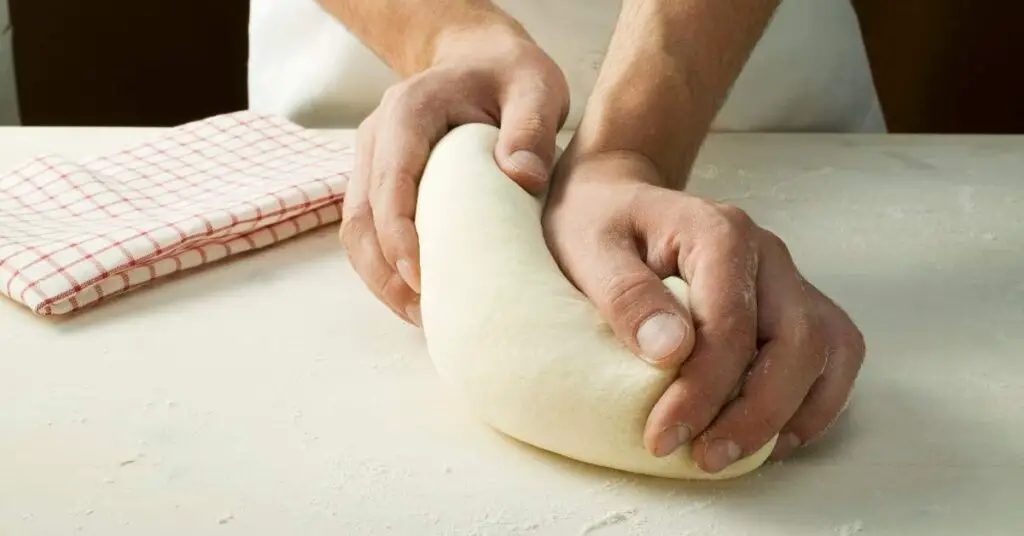
Kneading Pizza Dough Gives It Strength & Elasticity
Before diving straight into the issue of pizza dough that’s been kneaded too much, let’s first talk a little about why we knead pizza dough in the first place.
Pizza dough consists primarily of water, flour, yeast and salt. When we first mix these ingredients together, it bares very little resemblance to what we imagine when we think of pizza dough. Instead, it’s little more than a wet pile of flour.
The reason for this is because the gluten bonds haven’t formed yet. When water combines with flour and protein, it unravels the chains of gluten that are trapped inside the grains. When this happens, the gluten from one grain of flour links with the rest of the grains to create a dough that we can stretch and shape into something that will bake into a pizza crust.
But these gluten bonds don’t form immediately, which is why we knead pizza dough before using it. As we knead the dough, the gluten is given a chance to release and link up with the rest of the gluten in the mixture making it strong and elastic.
This process also happens over time, with or without kneading, which is something we’ll get into later.
Related Post: Why Does My Pizza Dough Smell Like Alcohol?
Can You Knead Pizza Dough Too Much?
If you’re kneading by hand, it’s almost impossible to knead pizza dough too much.
In fact, even if you overworked your pizza dough for an hour straight, it still would likely be fine. And after you let the dough rest for 30 minutes to an hour, you might not even be able to tell the difference between it and another dough that had been kneaded less.
If you’re kneading the pizza dough with a stand mixer, it is possible to knead it too much but not to the point where the damage is irreversible. This is because stand mixers can knead much faster and more powerfully than a normal human can.
So, if you turn on your mixer and forget about it for an hour, the gluten bonds in the dough will be so tight and strong that the dough ball will be almost impossible to stretch out or flatten.
But even in this scenario, you should be able to relax those gluten bonds simply by letting it rest at room temperature for several hours. It might take a while, but eventually your ball of dough will be nice and relaxed and ready for shaping. Maybe it’s a slightly more elastic dough ball than normal, but it should still be fine.
One of my favorite baking Youtube channels, Bake With Jack, did an experiment on this a few years ago where he kneaded a bread dough for over an hour. The results were surprising because there was very little difference in the finished product.
What Happens When You Knead Pizza Dough Too Much?
Since kneading is all about forming gluten bonds, the problem with kneading too much is that the gluten bonds become too strong.
Normally, a freshly kneaded ball of dough is still quite relaxed and will sink down on the counter as gravity flattens it out.
But a ball of dough that’s been kneaded too much will remain dense because the gluten bonds are so tight that there’s no give to the dough. Because of this, over-kneaded pizza dough has a higher likelihood of tearing and breaking.
As I mentioned above, if this happens to you it’s no reason to panic or throw out the dough. Just let it sit at room temperature until the gluten bonds naturally relax over time. You’ll be able to tell when it’s ready because it will be much more pliable than when you started.
Pizza Dough Should Be Kneaded Until It’s Soft & Smooth
When you first start kneading pizza dough, or any kind of dough really, it’s easy to feel like you’ve just embarked on a process that will never end. And as your arms get tired you’ll with you just ordered a pizza instead.
But this is usually because you don’t know what you’re trying to accomplish so you don’t know when it’s finished.
You want to knead your pizza dough until it’s smooth and strong. This generally means you can pull the dough and stretch it without it breaking apart. You should be able to stretch the dough enough that it forms a thin translucent layer that let’s light pass though – this is often called the “windowpane test”.
If you try this test on a dough that hasn’t been kneaded enough, it will simply tear apart long before it becomes translucent.
Knead Your Pizza Dough In Stages For Best Results
The truth is, you don’t really need to knead your pizza dough for that long to get great results. It’s also not really about timing and more about results, unless you’re using an electric mixer.
If you’re kneading pizza dough by hand, like most people, the best way to get great results with minimal effort is to do it in stages. This means kneading for a few minutes, then covering it and letting it rest for 10 minutes. You can repeat this process until the dough is smooth, elastic and stretchy.
However, bear in mind that the higher the hydration level of your dough, like my 70% hydration recipe, the longer it will take and the less smooth it will appear until it rises.
The best method for kneading pizza dough, especially wet dough, is to fold the dough on top of itself several times for a couple of minutes and then letting it rest (covered) for about 10 minutes. Each time you return to work with the dough, you’ll notice that it’s smoother and silkier. This is because the gluten bonds continue to form during the rest period.
On the other hand, if you’re using a stand mixer, you can generally mix the dough for around 8 minutes and it will be nice and smooth. If not, you can mix it for an extra minute at a time until it’s finished.
Try A No-Knead Recipe Instead
I rarely knead my pizza dough because I usually opt for a no-knead recipe.
Kneading pizza dough creates gluten bonds, but kneading isn’t the only way this happens. Gluten bonds will naturally form over time if you let the dough sit long enough.
What I do is mix my ingredients and then let it sit in a covered bowl for 11-18 hours. During this time, the gluten bonds form naturally and the pizza dough can then be divided and shaped into balls for final proofing.
In my opinion no-knead pizza dough is the best method because it ensures your dough will be strong and elastic, but never too strong that it can’t be shaped or not pass the windowpane test.
You also get the added benefit of extra fermentation during the time it has to sit at room temperature. This means the pizza crust will be light and fluffy as well as easily digestible. For even more benefits, I let the divided dough balls cold ferment in the fridge for an additional 24-48 hours.
This means some of my pizza doughs have been fermented for 72 hours or more before I finally use them. The ease of preparation and extra flavor and digestibility is well worth the wait.
Looking for a great no-knead pizza dough recipe? Try mine here.
Final Thoughts
If you’re worried about kneading your pizza dough for too long, don’t be. It’s nearly physically impossible to knead pizza dough too long by hand. And even if you do it too long using a mixer, you can just let it sit for a while and time will fix it for you.
What are your thoughts and experiences on kneading dough for too long? Any questions for me? Let me know in the comments below?



